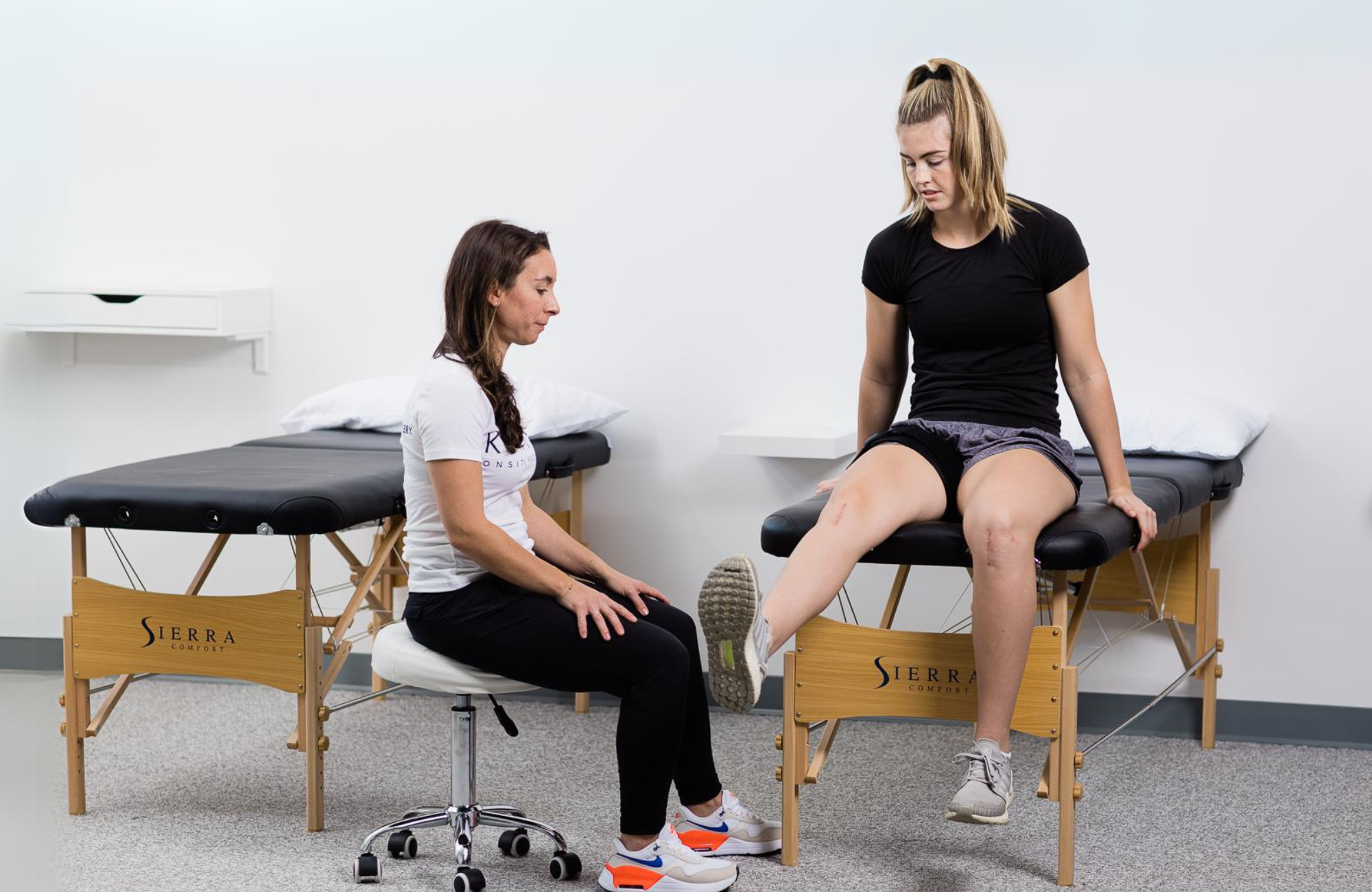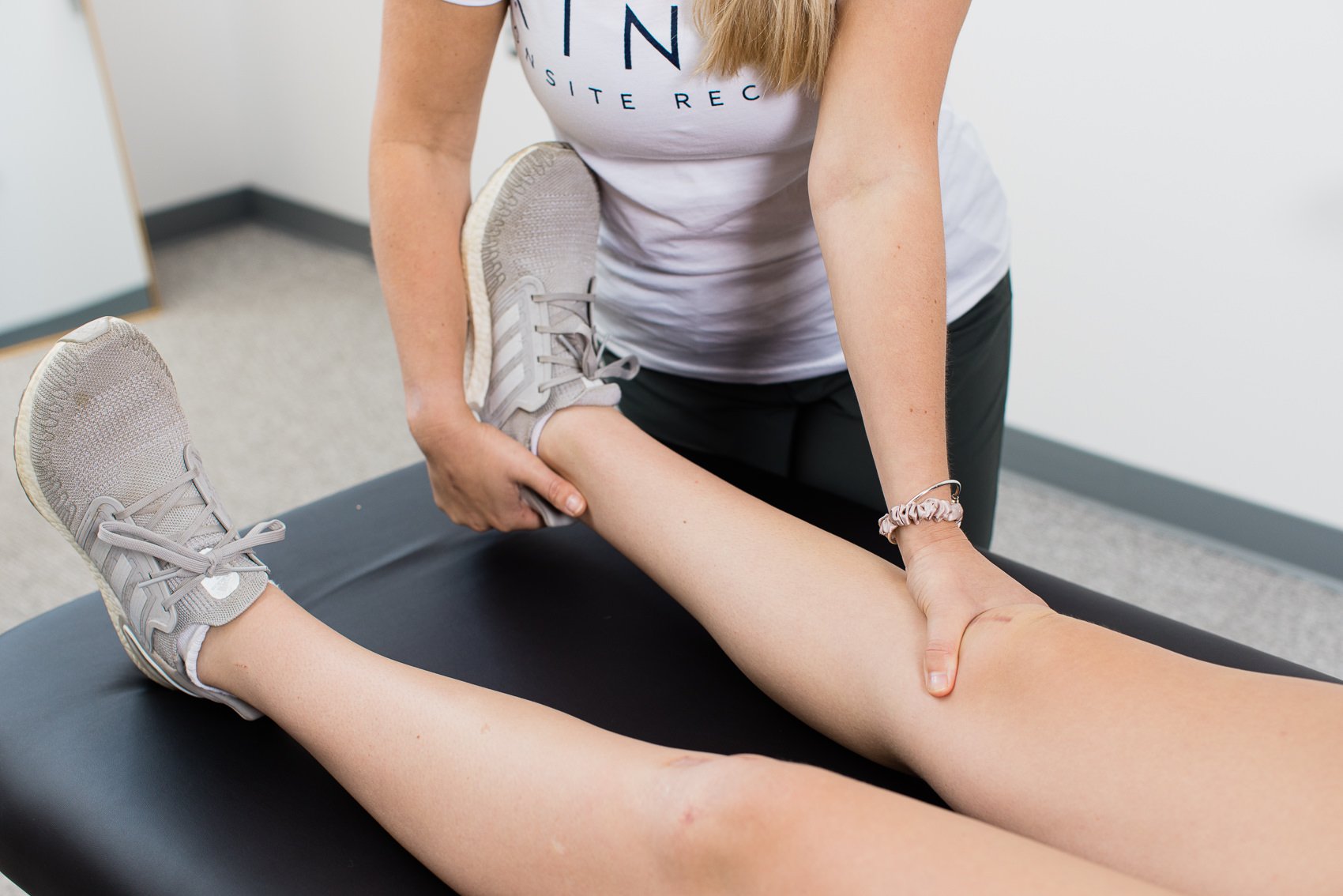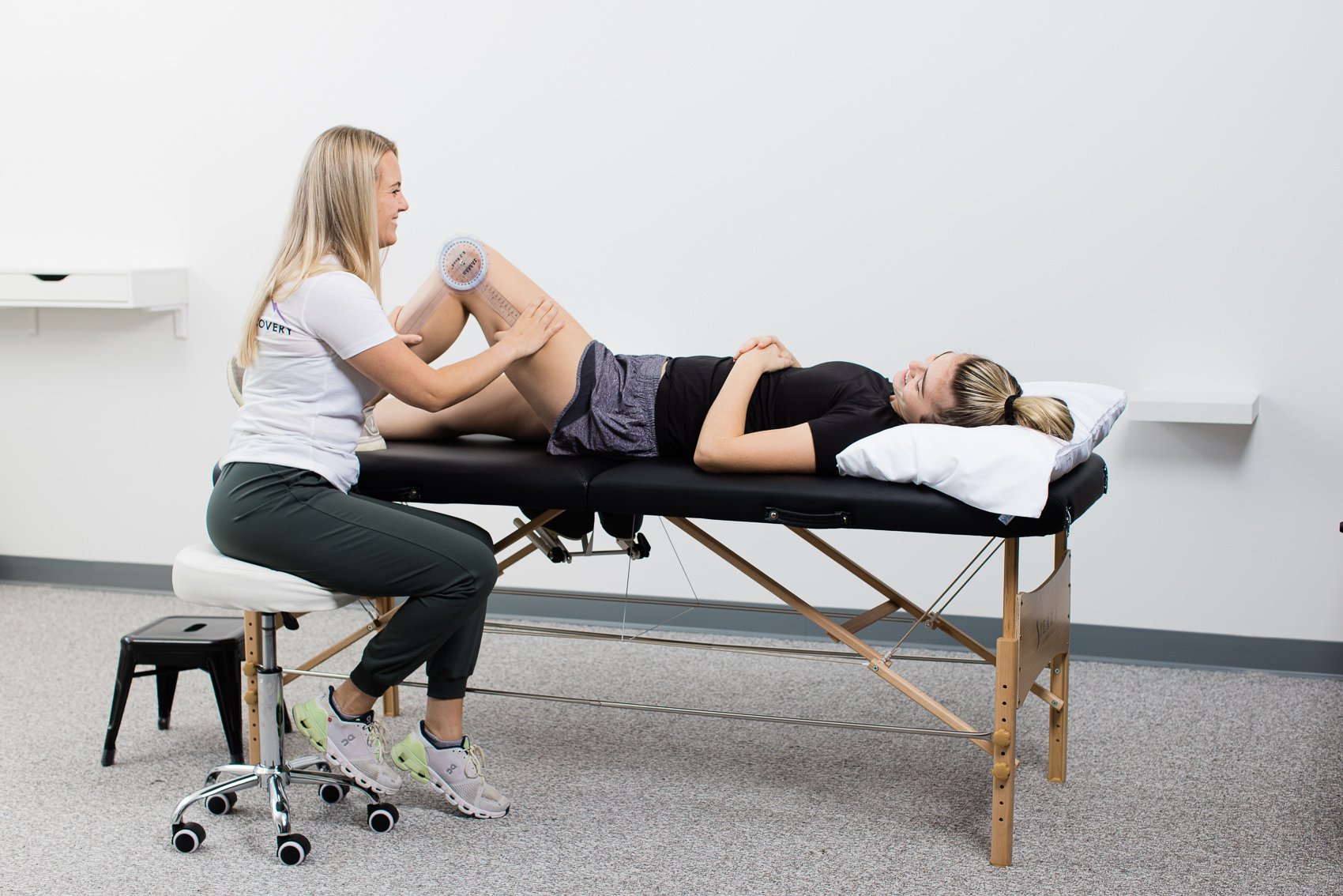
SPORTS
PHYSICAL THERAPY
SPORTS PHYSICAL THERAPY
•
MOVE BETTER
•
FEEL BETTER
•
SPORTS PHYSICAL THERAPY • MOVE BETTER • FEEL BETTER •
The Power of Physical Therapy
At KINISI, we understand the unique challenges faced by female athletes who are injured and in pain. Our specialized physical therapy services are designed to address and alleviate discomfort and guide athletes back to their sports at peak performance. Physical therapy at KINISI involves a comprehensive approach that includes a thorough evaluation, personalized treatment plans, and evidence-based techniques to restore mobility, strength, and function. By focusing on the root causes of pain and dysfunction, our expert therapists work diligently to promote long-term healing and prevent future injuries. The goal is not just to recover, but to return stronger and more resilient, allowing female athletes to achieve and surpass their previous levels of performance.
The KINISI Physical Therapy Approach
Our comprehensive evaluation starts with an extensive total body movement screen conducted by a licensed Doctor of Physical Therapy, followed by an individualized one-on-one treatment session to improve mobility, strength, and movement patterns.
During the initial evaluation, we will conduct a comprehensive assessment to identify the factors that are contributing to your injury and create a customized plan to address each concern. We will work with you to modify your existing exercise regimen and allow you to keep working toward your fitness goals.
Therapeutic Treatment
This is available for all clients that have been formally evaluated by one of our team members. After the evaluation your therapist might discuss the following recovery therapies:
-
Using a combination of static and dynamic stretching techniques, these sessions are great before or after exercise to help decrease delayed onset muscle soreness. Each session is tailored to your unique needs, ensuring optimal alignment and stretching of muscles and joints. Our licensed physical therapists use their expertise to safely guide you through stretches that can prevent injuries and accelerate recovery. Whether you're an athlete aiming to boost performance or someone seeking relief from stiffness and pain, assisted stretching can help you achieve your goals.
Benefits Include:
Improved flexibility
Increased joint mobility
Decreased recovery time
Injury prevention
Pain relief
Reduced muscle tension
-
Blood Flow Restriction (BFR) is a training method to partially restrict blood flow into the muscles while completely restricting blood flow out of the muscles (before, during, or after exercise). BFR allows for significantly more metabolic stress (a primary component of hypertrophy and strength gains) using light resistance training while getting results comparable to traditional heavy resistance training. Using the principles of ischemic preconditioning, our therapists will use a small cuff on your arms or legs to help make metabolic changes in your body to support your recovery. This technique involves on-off intervals of restricting blood flow to train the body to do more with less, fostering chronic adaptation to stress.
Good candidates for this therapy include:
Rehabilitation Patients: Individuals recovering from injuries or surgeries who need to build strength without placing excessive stress on healing tissues.
Athletes: Those looking to enhance muscle strength and hypertrophy while minimizing joint strain and the risk of injury.
Older Adults: Seniors aiming to maintain or improve muscle mass and function with low-intensity exercises that are easier on their joints.
Chronic Pain Sufferers: People with chronic conditions like arthritis or fibromyalgia who can benefit from strength training with reduced loads.
Post-Surgical Patients: Individuals post-ACL reconstruction or other surgeries where traditional high-load training might be contraindicated.
-
Cold compression recovery systems accelerate natural healing after a sports injury or surgery. Cold compression therapy utilizes cold compression cuffs on your arms, legs, ankles, shoulders, or hips, integrating intermittent pneumatic compression and cryotherapy to reduce pain and swelling, reduce muscle spasms, enhance lymphatic function, encourage cellular oxygen supply, and stimulate tissue repair – naturally and without narcotics. Now you can train longer and compete harder.
Benefits include:
Decreased swelling
Improved circulation
Pain relief
-
Dry needling is a treatment technique used to help resolve soft tissue dysfunction. This unique procedure is designed to target and restore muscle and tissue function individually. It is essential to correct these issues because continued activity with reduced muscle function can lead to further damage and increased pain.
Dry needling uses a fine needle to penetrate the skin and stimulate underlying muscular and connective tissue trigger points. Trigger points are tight bands of skeletal muscles, or “knots,” located within a larger muscle group, and can be tender to the touch. Dry needling can reduce muscle tension and spasms, decrease inflammation, reduce tissue adhesions, and accelerate a patient’s return to active rehabilitation.
Physical therapists that utilize dry needling will always perform a thorough assessment to identify the source of your pain and determine if dry needling is appropriate. Treatment is often supplemented with other manual therapy techniques such as massage, stretching, joint mobilization, and corrective exercise to remedy imbalances in strength or motion that are causing your symptoms.
Benefits Include:
Treatment of underlying musculoskeletal injuries
Improved blood flow
Restoration of collagen formation
Decreased pain
-
Joint mobilization is a hands-on manual therapy technique which involves gently moving and manipulating the joint within its normal range of motion to alleviate stiffness, enhance flexibility, and facilitate proper alignment and movement patterns. There are two main types of mobilizations:
During oscillatory joint mobilizations, your physical therapist will use gentle pressure on a joint that is traveling at a slow speed. Pressure is applied at multiple points through the range of motion.
During sustained joint mobilizations, your physical therapist will pull on your joint for a sustained period of time in order to alleviate joint compression and stretch the surrounding tissues of the joint.
Benefits Include:
Decreased pain
Increased range of motion
Increased flexibility
Decreased tension
Better function of the joint
-
For athletes who always push their bodies to their limits and need the next level of recovery to perform at their best, Sequential Pulse Technology is a key tool in treating soft tissue injury and speeding recovery time to help ensure your muscles are at their healthiest. Compressive therapy uses large pneumatic sleeves on your arms, legs, or hips.
Benefits Include:
Enhanced blood flow
Maximized recovery
Enhanced movement of fluid out of limbs
Prevention of DVT
Supports of lymphatic drainage
Reduced inflammation
-
Soft tissue mobilization, also known as Graston Technique, is a form of manual therapy using handheld tools to mobilize soft tissue. The therapist mobilizes soft tissue using instruments to improve soft tissue restrictions contributing to your injury. This is considered deep tissue work and a more intense form of soft tissue mobilization.
Whether you are suffering from chronic, acute, or post-surgical pain, soft tissue mobilization uses specially designed stainless steel instruments with unique treatment edges and angles that enable a physical therapist to break down and treat all soft tissue conditions and fascial restrictions effectively. The technique will not only accelerate your rehabilitation but also help improve the mobility of a joint or muscle, promote healing of a strain or sprain, address post-operative scar tissue formation, decrease pain, and restore overall function to help you enjoy life again.
Benefits Include:
Pain relief
More mobility in soft tissue
Fewer mobility restrictions in fibrous tissue
Fewer muscle spasms
Increased blood circulation to tissues
Improved flexibility
-
Cupping therapy is another form of manual therapy where cups are placed on the skin to create suction. A vacuum or suction force inside the cup pulls your skin upward. This suction helps improve microcirculation at the site of treatment and increases blood flow to the body.
Benefits Include:
Reduced pain
Decreased inflammation
Scar tissue mobilization
Boosted recovery


